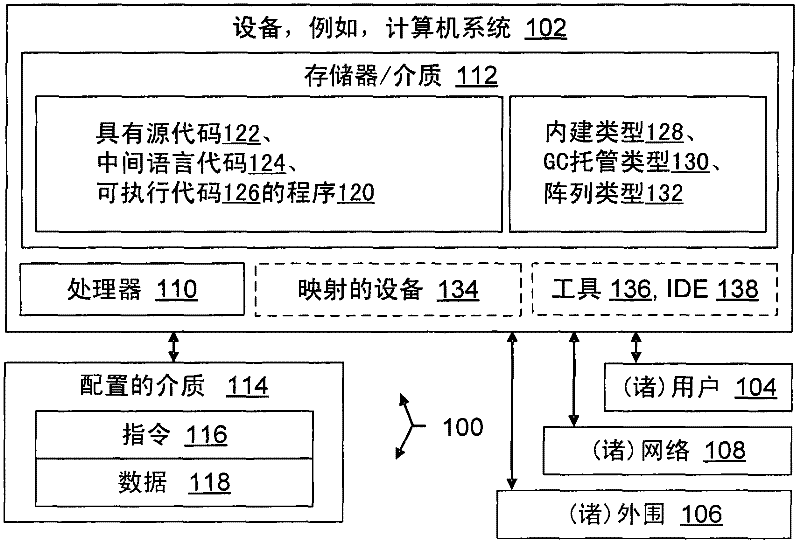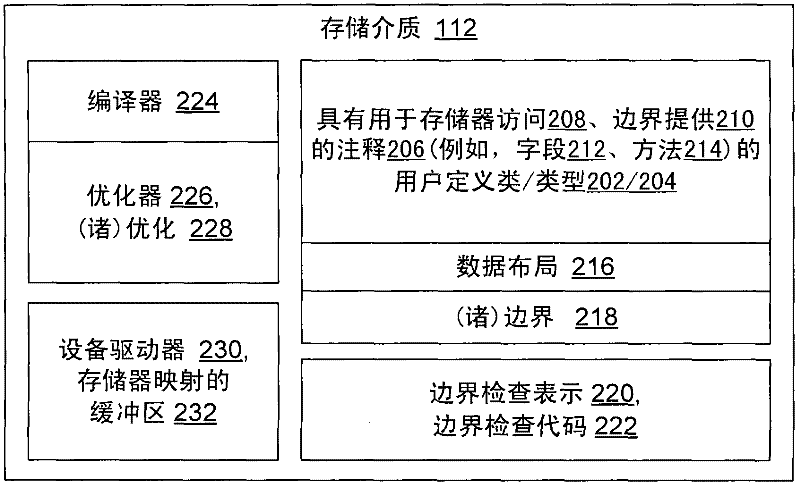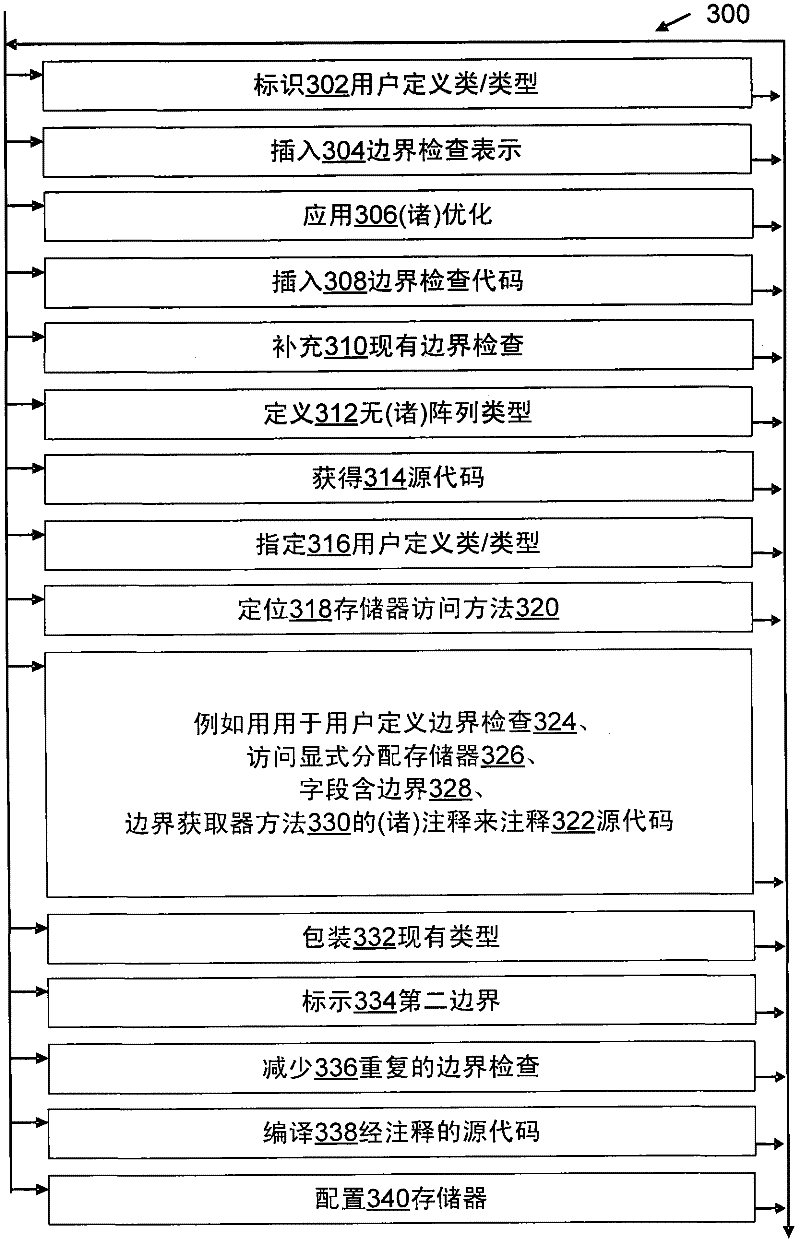Compile-time bounds checking for user-defined types
A technique of boundary checking and definition, applied in the direction of using stored programs for program control, program code conversion, instrumentation, etc.
- Summary
- Abstract
- Description
- Claims
- Application Information
AI Technical Summary
Problems solved by technology
Method used
Image
Examples
Embodiment Construction
[0013] overview
[0014] Today's managed code systems, like Microsoft .NET and environments (marks of Microsoft Corporation and Oracle America Corporation, respectively), it is often assumed that all memory used by managed code programs is allocated and managed automatically. However, in system programming, especially device driver programming, this assumption may fail. In some cases, the memory used by a device driver is fixed in location by the physical device, such as when buffers on the device are memory mapped into a specific set of addresses. In other cases, memory is managed explicitly to avoid unnecessary copying of data or to reuse buffers within certain time limits.
[0015] In some languages (such as C#), programmers will frequently use unsafe pointers to unmanaged data structures when the program uses explicitly allocated memory. Care must be taken to avoid errors when accessing this pointer or doing pointer arithmetic. Unsafe pointers can negate the corre...
PUM
 Login to View More
Login to View More Abstract
Description
Claims
Application Information
 Login to View More
Login to View More - R&D Engineer
- R&D Manager
- IP Professional
- Industry Leading Data Capabilities
- Powerful AI technology
- Patent DNA Extraction
Browse by: Latest US Patents, China's latest patents, Technical Efficacy Thesaurus, Application Domain, Technology Topic, Popular Technical Reports.
© 2024 PatSnap. All rights reserved.Legal|Privacy policy|Modern Slavery Act Transparency Statement|Sitemap|About US| Contact US: help@patsnap.com










